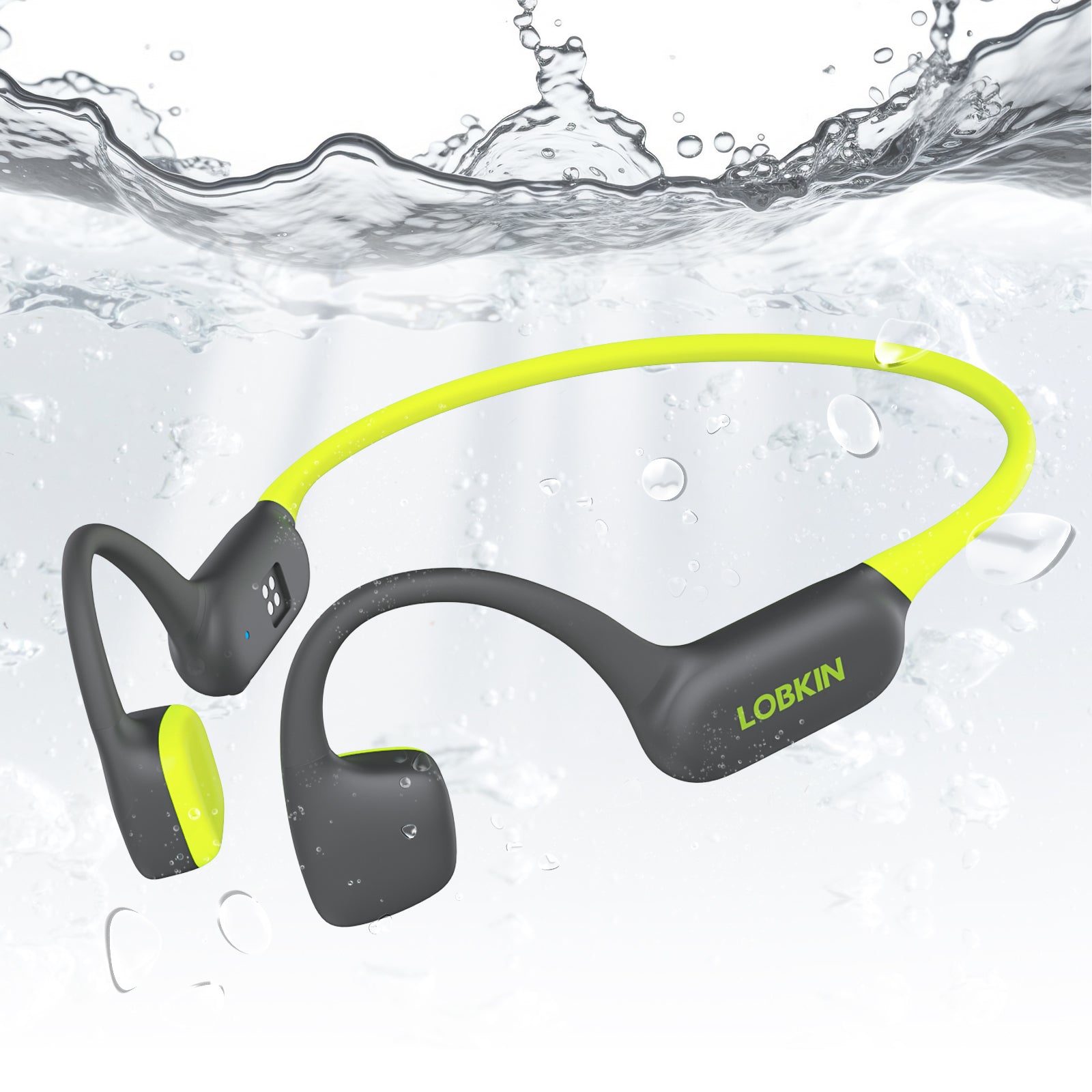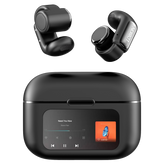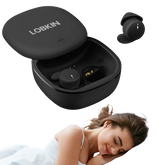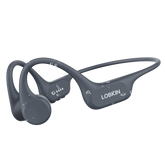Kids Headphones Buying Guide: 5 Essential Features to Protect Your Child's Hearing
Why Kids Need Special Headphones
Children's ears are more sensitive than adults', and prolonged exposure to loud sounds can cause permanent hearing damage. According to the World Health Organization, over 1 billion young people are at risk of hearing loss due to unsafe listening practices. That's why choosing the right headphones for your child is crucial.
The 5 Essential Features Every Kids Headphone Should Have
1. Volume Limiting Technology (85dB Maximum)
Why 85dB?
The WHO and pediatric audiologists recommend limiting children's audio exposure to 85 decibels. This is roughly the volume of city traffic or a busy restaurant - loud enough to enjoy content, but safe for extended listening.
What to Look For:
- Built-in volume limiter (not just parental controls that can be bypassed)
- Hardware-based limiting (more reliable than software)
- Clear indication that volume limiting is active
LOBKIN Kids Headphones feature hardware-based 85dB volume limiting that cannot be overridden, ensuring consistent hearing protection.
2. Comfortable, Adjustable Design
Kids grow fast, and uncomfortable headphones won't get used. Look for:
- Adjustable headband: Should fit ages 3-12+
- Soft ear cushions: Memory foam or soft padding
- Lightweight construction: Under 200g for all-day comfort
- Flexible materials: Won't break when dropped or bent
3. Durable Construction
Kids are tough on their belongings. Essential durability features:
- Reinforced headband
- Tangle-free cables (for wired models)
- Impact-resistant materials
- Foldable design for easy storage
- Replaceable parts (ear cushions, cables)
LOBKIN kids headphones are drop-tested and built to withstand daily use by active children.
4. Safe Materials
Children's products must be made from safe, non-toxic materials:
- BPA-free plastics
- Hypoallergenic ear cushions
- Lead-free components
- Food-grade silicone (if applicable)
- Certified by relevant safety standards (CPSIA, EN71)
5. Age-Appropriate Features
Different ages need different features:
Ages 3-6 (Preschool)
- Fun designs and colors
- Very simple controls
- Extra padding
- Wired connection (no battery concerns)
Ages 7-10 (Elementary)
- Wireless Bluetooth option
- LED lights or fun features
- Microphone for online learning
- Longer battery life (20+ hours)
Ages 11+ (Tweens/Teens)
- More mature designs
- Better sound quality
- Active noise cancellation
- Foldable, portable design
Wired vs. Wireless: Which is Better for Kids?
Wired Headphones
Pros:
- No battery to charge
- No radiation concerns
- More affordable
- Can't be lost as easily (attached to device)
Cons:
- Cable can tangle
- Cable can break
- Less freedom of movement
Wireless Headphones
Pros:
- Freedom of movement
- No tangled cables
- Modern convenience
- Better for active kids
Cons:
- Need regular charging
- Can be lost more easily
- Slightly more expensive
LOBKIN Recommendation: We offer both options! Our K10 wired headphones are perfect for younger children, while K20 Bluetooth headphones suit older kids who need wireless freedom.
Additional Features to Consider
Built-in Microphone
Essential for:
- Online learning and video calls
- Gaming with friends
- Voice commands
Sharing Capability
Some headphones include:
- Audio sharing jack (connect two headphones)
- Splitter cable included
- Perfect for siblings or friends
Fun Design Elements
Kids love headphones that reflect their personality:
- LED lights
- Character designs
- Customizable stickers
- Multiple color options
LOBKIN's LED Cat Ear Headphones are a huge hit with kids who want style and safety!
LOBKIN Kids Headphones Collection
K10 Wired Kids Headphones
- 85dB volume limiting
- Adjustable headband (ages 3-12)
- Soft memory foam ear cushions
- Tangle-free cable
- Built-in microphone
- Available in 5 colors
K20 Bluetooth Kids Headphones
- 85dB volume limiting
- Wireless Bluetooth 5.0
- 50+ hour battery life
- Foldable design
- Built-in microphone
- Wired mode option (included cable)
K30 LED Cat Ear Headphones
- 85dB volume limiting
- Colorful LED lights
- Bluetooth + wired modes
- 40+ hour battery
- Cute cat ear design
- Perfect for ages 6-14
How to Teach Kids Safe Listening Habits
The 60/60 Rule
Teach children to:
- Listen at no more than 60% volume
- Take a break every 60 minutes
Recognize Warning Signs
Teach kids to tell you if they experience:
- Ringing in ears
- Muffled hearing
- Ear pain or discomfort
- Difficulty hearing after removing headphones
Set a Good Example
Children learn by watching. Model safe listening habits yourself!
Red Flags: Headphones to Avoid
Stay away from headphones that:
- Don't specify maximum volume
- Have volume limiting that can be easily bypassed
- Are made from cheap, potentially toxic materials
- Have no safety certifications
- Are marketed as "adult headphones for kids"
Maintenance and Care Tips
Daily Care
- Wipe ear cushions with a dry cloth
- Store in a safe place when not in use
- Keep away from extreme temperatures
Weekly Care
- Clean ear cushions with mild soap and water
- Check cables for damage (wired models)
- Ensure all parts are secure
Monthly Care
- Deep clean with electronics-safe cleaner
- Check battery health (wireless models)
- Inspect for wear and tear
Frequently Asked Questions
At what age can my child start using headphones?
Most experts recommend waiting until age 3, when children can understand basic instructions about volume and care. Always supervise young children with headphones.
How long should kids wear headphones each day?
Limit headphone use to 2-3 hours per day for children, with regular breaks. Even with volume-limited headphones, ears need rest.
Can volume-limited headphones be too quiet?
85dB is plenty loud for children. If your child complains it's too quiet, check for:
- Background noise (move to quieter environment)
- Poor fit (sound leaking out)
- Device volume settings
Are wireless headphones safe for kids?
Yes! Bluetooth headphones emit very low levels of radiation, far below safety limits. The benefits of wireless freedom often outweigh any theoretical concerns.
What if my child has sensitive ears?
Look for:
- Extra-soft ear cushions
- On-ear rather than over-ear design
- Lightweight construction
- Adjustable pressure
LOBKIN offers models specifically designed for sensitive ears.
Conclusion
Protecting your child's hearing is one of the most important things you can do as a parent. By choosing headphones with proper volume limiting (85dB), comfortable design, durable construction, safe materials, and age-appropriate features, you're investing in your child's long-term hearing health.
Remember: the best kids headphones are the ones your child will actually want to wear. LOBKIN combines safety with fun designs that kids love, making hearing protection easy.
Ready to protect your child's hearing? Explore LOBKIN's kids headphones collection today!







